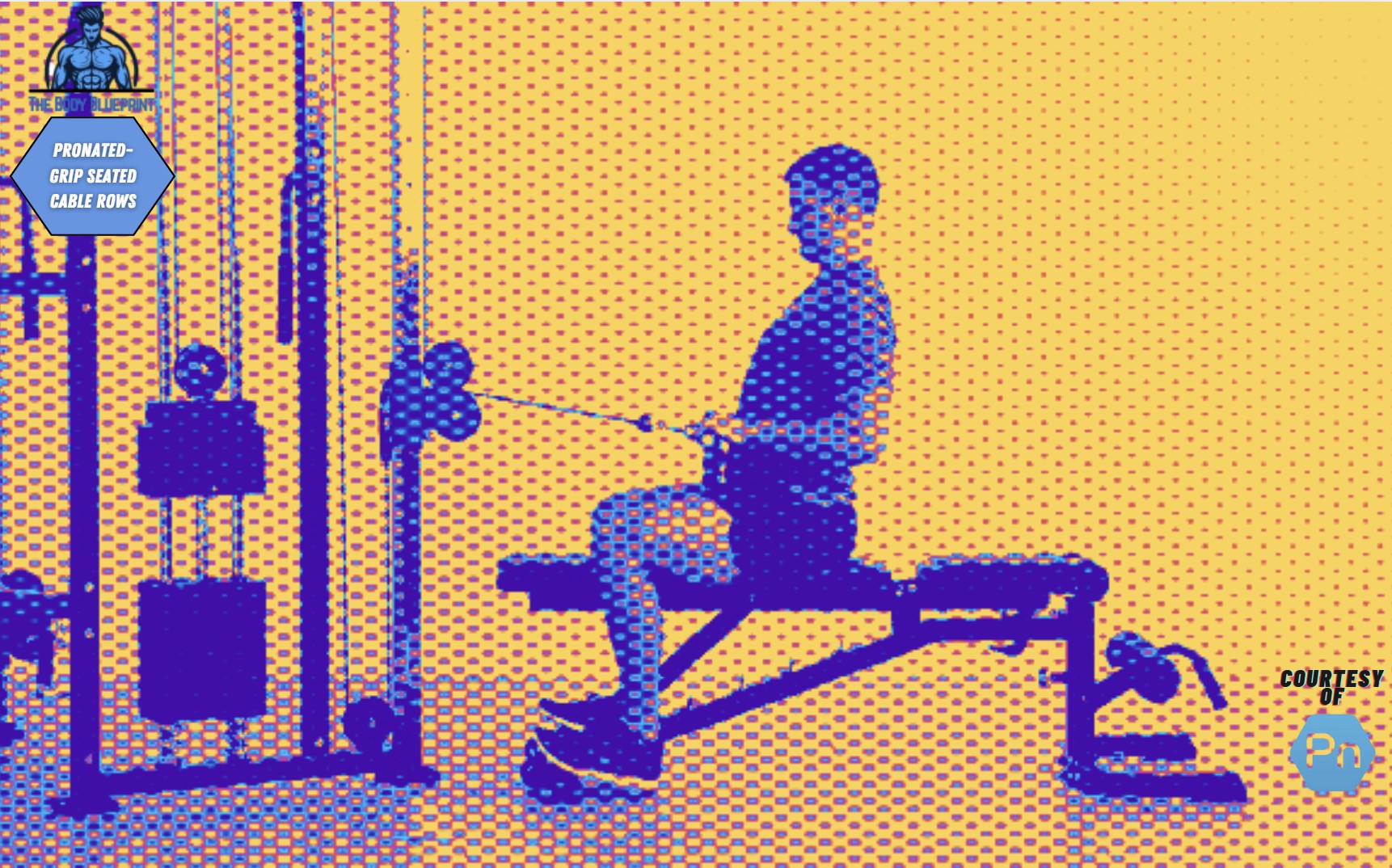You’re here because you know that the seated cable row isn’t just another exercise—it’s a game-changer. When done right, pronated-grip seated cable rows will develop those broad, thick lats that scream power. Ready to up your back game and pull with purpose? Let’s dive in. Here’s how to nail that form, harnessing power and strength with every rep.
The Basics: Why the Pronated Grip Matters
Before you hit the gym, let’s understand why the pronated grip is a critical piece of the puzzle. The pronated grip (palms facing down) shifts the focus slightly, hitting your upper back, traps, and rear delts more effectively than a neutral grip.
- Target Areas:
- Upper Lats
- Traps
- Rhomboids
- Rear Deltoids
- Biceps (though secondary)
By using this grip, you’re tapping into a deeper pull, a fuller range of motion. It’s not just about looking good; it’s about building a back that performs as much as it flexes.
Step-by-Step: Performing Pronated-Grip Seated Cable Rows
- Set Your Seat and Knees:
Adjust the seat so that your knees sit comfortably under the pads. This prevents you from sliding forward during your set. Your thighs should be locked in, ensuring stability. - Grip the Handle:
Reach forward and grab the handle with your hands shoulder-width apart. Make sure your palms are facing down in a pronated grip. Keep your wrists straight—not bent. - Brace Your Core:
Engage your core. Not just a casual flex, but a real, deep brace. Feel it in your abs. This will keep your back safe as you pull. - Pull the Handle:
Start by pulling the handle toward your torso. Keep your chest proud, shoulders back. Don’t round your back! The goal is to squeeze your shoulder blades together as you pull the weight toward you. - Full Range of Motion:
Let your arms extend all the way back, keeping tension on the cable. Resist the urge to let go of the tension. Each rep should have full engagement. - Control the Return:
Don’t just let the weight drop. Control it. Squeeze your back at the end of the movement, then slowly extend your arms to feel that stretch.
Common Mistakes to Avoid
Avoiding these errors will make all the difference. Don’t let bad habits hold you back from your potential.
| Mistake | Fix |
|---|---|
| Hunched Shoulders | Keep your shoulders pulled back and chest proud throughout. |
| Overarching Your Lower Back | Brace your core and engage your glutes to keep your lower back neutral. |
| Rushed Reps | Slow down, especially on the negative (return phase) of the movement. |
| Short Range of Motion | Don’t cheat yourself. Extend your arms all the way out to get a full stretch. |
Pro Tips for Enhanced Results
Want to elevate your seated cable rows to next-level power? Here’s how to make every set count.
- Use a Full Range of Motion: The more you stretch at the start of each rep, the more your back is under tension. Your lats will thank you for it.
- Pause at the Peak: When the handle reaches your torso, pause for 1-2 seconds and really squeeze those lats. Don’t rush through it—this is where growth happens.
- Vary the Grip: Switch up the pronated grip occasionally with a supine grip (palms facing you) to target different muscle fibers. This keeps your muscles guessing and growing.
Why This Exercise is Critical for Building a Stronger Back
- Muscle Mass: You’re building a thicker, wider back by strengthening the lats and traps. This isn’t just about aesthetics; it’s about raw power and pulling capacity.
- Posture: Your posture improves as your upper back muscles grow stronger. No more slouching. You stand tall, shoulders back—like a man who commands attention.
- Upper Body Strength: You’ll see an increase in your pulling power, which directly translates into better performance on deadlifts and pull-ups.
Seated Cable Row Variations: Keep Things Fresh
Keep the workout interesting and prevent plateaus by rotating in these variations.
| Variation | Focus | How To |
|---|---|---|
| Wide-Grip Cable Row | Lats and traps | Use a wider grip to focus more on the lats and outer back. |
| Single-Arm Cable Row | Unilateral development | Use one arm at a time to work on strength imbalances. |
| Chest-Supported Cable Row | Emphasizes form and control | Sit on an incline bench with chest supported to avoid swinging. |
How to Progress and Build Strength
To build strength in your seated cable rows, progressive overload is your best friend. Increase either the weight or reps, but focus on maintaining perfect form. Start light if you’re new, and gradually increase the load.
Final Thoughts: Unlock Your Full Back Potential
Mastering the pronated-grip seated cable row is about precision. It’s not just about throwing weight around—it’s about deliberate movement, controlled reps, and maximum muscle engagement. It’s about building a back that not only looks impressive but performs with power and poise.
Stay focused, stay disciplined, and the gains will come.

